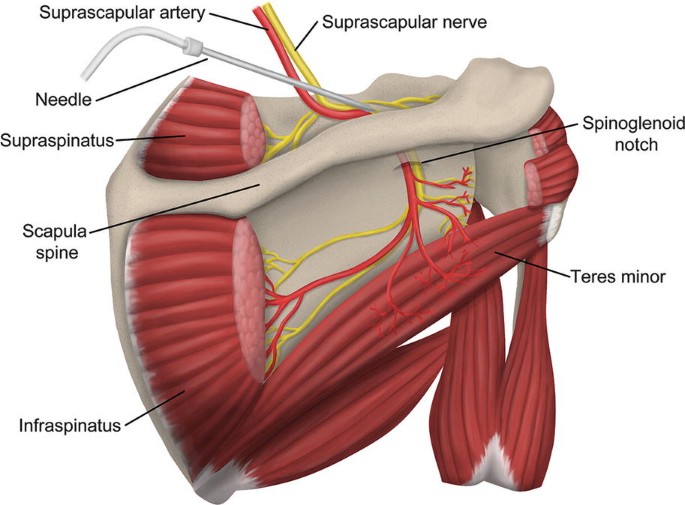- Home
- Supra Scapular Nerve Entrapment
Supra Scapular Nerve Entrapment
What is Suprascapular nerve
It is a nerve that supplies power to the supraspinatus and infraspinatus muscles.It is a relatively uncommon cause of shoulder pain and dysfunction – in some scenarios, nerve entrapment and/or injury can contribute to significant disability. However, it can be hard to diagnose unless the doctor specifically examines the patients for it. If the diagnosis is delayed or missed, it leads to atrophy (loss of muscle bulk) which cannot be reversed and patient may end up with permanent weakness of the shoulder. In many cases it is confused with rotator cuff tear that can sometimes coexist with the nerve pathology.

How does it get injured?
The nerve passes through small gaps in bone called notches, and anything that narrows the notch may injure the nerve. Occasionally the shape of notch may predispose the nerve to compression. somtimes paralabral cysts from within the shoulder can extend more medially and affect the nerve at the suprascapular notch.
In addition to focal nerve entrapment, neuropathy can also result from repetitive injuries from overhead activities, like playing basketball. Iatrogenic (injury during medical treatment) suprascapular neuropathy has also been reported following distal clavicle resection, spinal positioning, transglenoid stabilization, and during posterior approach to the shoulder.
What is Suprascapular nerve –
It is a nerve that supplies power to the supraspinatus and infraspinatus muscles.
BOOK AN APPOINTMENT
First Choice for Orthopedics &
Joint Replacements
How is it Diagnosed?
The symptoms vary widely. Most patients with suprascapular neuropathy complain of pain and weakness. The pain is often described as a dull, sometimes burning, ache in the posterior and lateral shoulder regions, with occasional radiation to the neck or lateral arm.
A) Physical Examination
Atrophy of the supraspinatus and/or infraspinatus muscle belly is often evident. There is weakness in elevating the arm and maybe rotating outside.
B) Imaging
An Xray is useful to rule out arthritis or fracture etc. MRI is the imaging of choice to rule out rotator cuff tears, assess muscle atrophy and any cause of impingement of the nerve.
C) EMG/NCV
It is needed when a clinical evaluation and routine imaging studies do not demonstrate a clear focus of nerve entrapment.
How can it be treated
Most patients with an overuse type of neuropathy and no focal mass compression of the nerve will benefit from nonoperative treatment. Visit a shoulder specialist for your shoulder pain treatment to make final decision.Those with external compression need surgical intervention to prevent further nerve injury.
A) Nonoperative Treatment
Activity modification, Antiinflammatory medication and exercises. This is most useful before signigicant muscle wasting occurs.
B) Operative treatment (Surgery)
The most common sites of nerve compression are the suprascapular and spinoglenoid notches. The nerve can be decompressed with both open or arthroscopic (keyhole) surgery by a shoulder arthroscopy surgeon.


